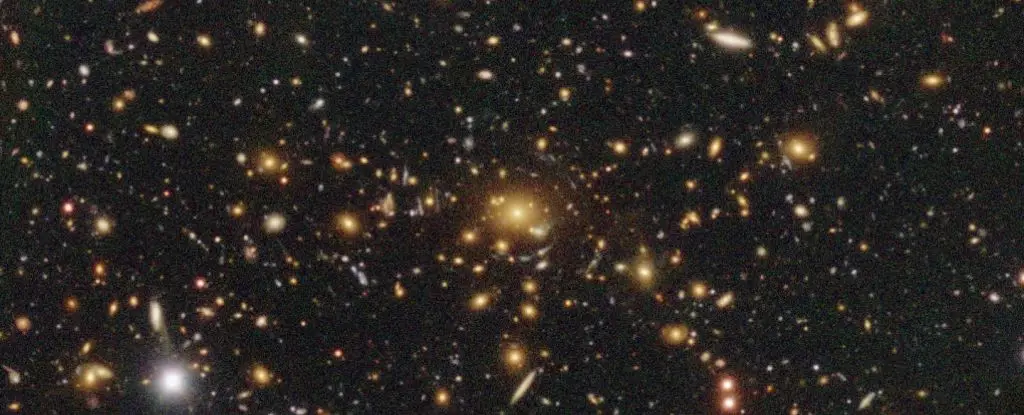The distribution of dark matter in the Universe has long intrigued scientists, but recent observations have raised more questions than answers. These observations reveal that dark matter, an elusive substance that exerts a gravitational influence on the Universe, is distributed differently now compared to its early stages after the Big Bang. It appears to be less clumpy in the current Universe, suggesting a fundamental mistake in the standard cosmological model. This intriguing puzzle has been detailed in five separate papers in Physical Review D, known as the sigma-eight (S8 tension), leaving researchers puzzled and searching for solutions.
To understand the distribution of dark matter, astronomers rely on different datasets of light from the Universe. One dataset is the cosmic microwave background (CMB), which is the faint background of microwave light leftover from the Big Bang. The other dataset is the result of a weak gravitational lensing survey using the Hyper Suprime-Cam (HSC) instrument on the Subaru Telescope in Hawaii. Weak gravitational lensing allows scientists to detect the presence of dark matter by observing the distortions it causes in the light streaming through the Universe.
The HSC survey, spanning six years of observation, analyzed the sky in various ways, returning values for S8 between 0.763 and 0.776. These values align with previous weak lensing surveys but deviate significantly from the S8 value obtained from the cosmic microwave background, which is 0.832. According to the cosmological standard model, the distribution of matter should have started smoothly and become progressively clumpier over time as galaxies and cosmic strands form. The consistency of the weak lensing results indicates that the discrepancy is unlikely to be a measurement error.
The researchers responsible for the weak gravitational lensing survey took extensive precautions to avoid bias and protect the integrity of their findings. They rigorously blinded themselves from the data’s values to ensure an objective analysis. This dedication to unbiased research adds credibility to the observed discrepancy between the CMB and weak lensing results.
While the discrepancy in dark matter distribution raises significant questions, it is not the only cosmological tension scientists face. The Hubble tension, for example, involves discrepancies in measurements of the Universe’s expansion acceleration. These tensions suggest that there might be fundamental flaws in our current cosmological models or our understanding of dark matter. It is possible that resolving one tension will elucidate the others, presenting a more complete understanding of the Universe.
However, it is evident that there are missing pieces to the puzzle of the Universe’s evolution. Researchers caution that they are not claiming to have disproven modern cosmology but rather suggesting a need for a deeper investigation. With advancements in instrumentation, astronomers will conduct more extensive surveys and acquire more precise measurements, gradually uncovering the mysteries of dark matter and other fundamental questions about the Universe’s formation and evolution.
The clumpy nature of dark matter presents a growing puzzle in the field of cosmology. The discrepancy between the distribution of dark matter observed via the cosmic microwave background and weak lensing surveys suggests a potential mistake in our current cosmological model. Researchers remain cautious but intrigued by the consistency of the measurements across different experiments. As the astronomical community continues to investigate this enigma, more powerful instruments and larger surveys will play a pivotal role in unraveling the secrets of dark matter and advancing our understanding of the Universe’s complex and mysterious nature.
The research papers detailing these findings can be accessed through the following links: [here](link), [here](link), [here](link), [here](link), and [here](link).


Leave a Reply